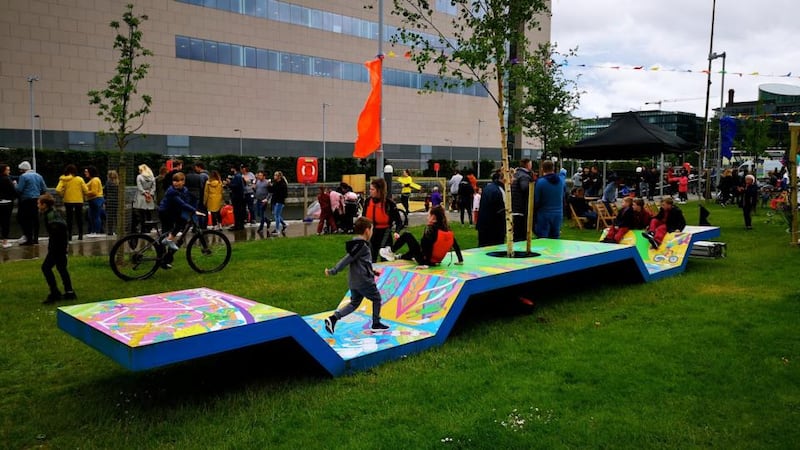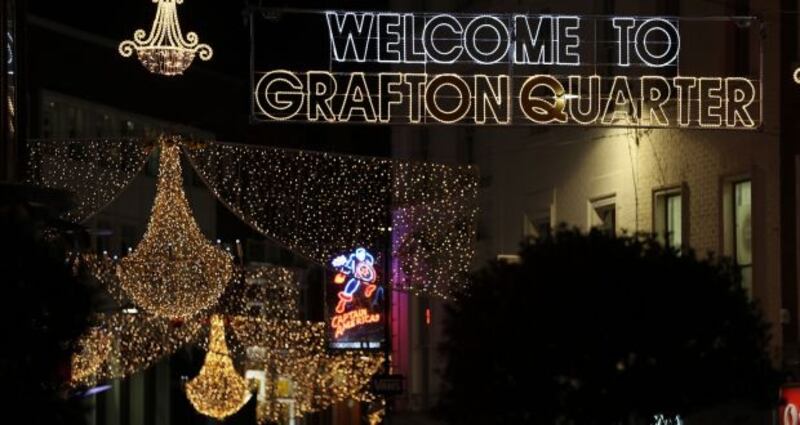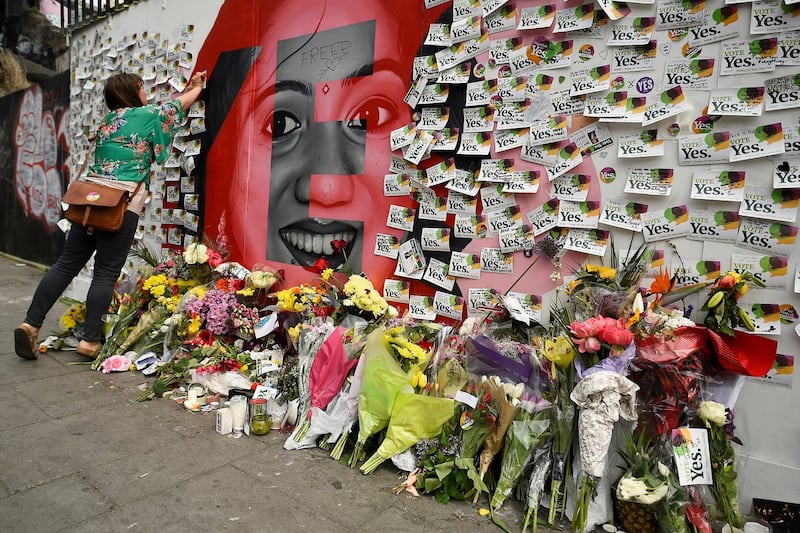When 2010 opened its bleary eyes, in the teeth of the last recession, it took our towns and cities a little while to catch up. People hang on, spend their savings, do their best.
Buildings, on the other hand, take longer in the planning and making. We have speeded up: the chapel at King’s College, Cambridge, was famously begun by one Henry (the sixth) and finished two Henrys later, by his namesake the eighth. Contemporary desires are more rapidly satisfied, but when the last decade shuffled in, some grand projects of the Boom were still coming on stream.
At Grand Canal Dock, the Grand Canal Theatre (now the Bord Gáis) had been in development since 2004. Then, the ideas being bandied about for the 2,000-plus seater included being a home for the Abbey, and a new National Concert Hall.
The empty buildings, collapse in property prices, and roll-up-your-sleeves attitude of the arts community had the potential to create the best of all dramas out of the crisis
We were dreaming big. Way too big, as it turned out. The theatre opened in March 2010, by now under the ownership of Harry Crosbie (via a loan from AIB). It opened with Swan Lake by the Russian Sate Ballet of Siberia, and went into receivership three years later.
Daniel Libeskind's Grand Canal Theatre was to be one of the last of Ireland's "starchitect" edifices. Back in the boom it seemed unthinkable that Dublin, as a self-respecting international city, wouldn't have its Santiago Calatrava bridge (check), Libeskind extravaganza (check), and Frank Gehry throwing shapes (check – although his Irish work is actually inside a Libeskind building – for Facebook in Dublin. Does that make it even cooler?).
We were even going to get our very own Antony Gormley erection, but the planned 46m (150ft) steel sculpture of a human figure (modelled as ever on Gormley's own body) had been scrapped, over costs (€1.6million and rising) in 2009.

Time-lag
Ten years ago, it never seemed to occur to anyone in charge of such things that Ireland was brimming with extraordinary architectural talent, or that cities could be defined by what we ourselves were proud of, rather than chasing the imposed dreams of other people and places.
Fast forward to the end of the decade and the desire to look just like everyone else seems rather unfortunate and embarrassing. Like wanting the biggest shoulder pads, or a ludicrous handbag covered in logos, padlocks and chains.
Even though the time-lag in terms of planning and construction meant that the global financial crisis took a while to make itself felt physically, the arts can move faster. In 2011, plays at the Cork Midsummer Festival were taking place in a ghost estate (Latch, at the Harbour Heights estate in Passage West, by Hammergrin), and in the empty, then-tallest building in Ireland, Cork's Elysian tower (Request Programme, by Corcadorca).
Hammergrin is gone, but Corcadorca has fortunately survived the great cull of theatre companies driven, in the main by a change in Arts Council policy.
It was decided that market forces would save the day
The empty buildings, collapse in property prices, and roll-up-your-sleeves attitude of the arts community had the potential to create the best of all dramas out of the crisis: one with a happy ending. As we all know now, the opportunity was missed.
Pallas Project and Studios, the not-for-profit, artist run organisation, was set up in Dublin in 1996. But, according to co-founder Gavin Murphy, between the years 2010 and 2019, they have been in four different buildings. A space on Dominic Street lasted only one year, because the bank foreclosed on the landlord. The lease on their current space, on Cork Street, expires in 2022.
“With regeneration having followed us to Dublin 8, we’re ardently trying to ensure that retention of cultural and studio spaces occurs amongst the hotels and student accommodation,” says Murphy.
“Artists’ studios and artist-run spaces play an important, yet precarious role in the revitalisation, and therefor the regeneration of derelict urban areas,” he continues.
"The experience of Pallas has demonstrated this, as it set up and was subsequently priced out of the Docklands, Grangegorman, Smithfield, and now Dublin 8 and The Coombe."
As this process takes hold, glass and chrome coffee-chains take over, pavement spaces are privatised with awnings and railings, and a process best described as pacification by cappuccino kicks in.
Corporate branding
This increasing speed of gentrification is another hallmark of the decade. Artists and small independent retailers barely have a chance to unpack before a canny developer or marketer slaps the tag “Quarter” on their newfound area, and then in come the corporates.
The Quarterisation of our cities reached its ludicrous nadir with the risible and derided Grafton Quarter Christmas sign this year over Grafton Street. Quite literally the paucity of corporate imagination, writ large, in lights.
The years following the turn of the decade were a time of huge flux: the Rubicon Gallery, a tireless and highly effective promoter of Irish artists on the international scene closed its doors, a victim of upwards only rent reviews: another utterly absurd idea, especially in a recession. But the naïve among us still had hope.

Surely the combination of a surplus of spaces, a surfeit of hugely creative people with time on their hands, and incredibly low property prices could, with just a little institutional support and the right sort of policies, help us to shape the kind of creative Ireland that is so widely vaunted overseas?
Instead, it was decided that market forces would save the day. Vulture funds were welcomed in with the same enthusiasm as the Starchitects had been previously. Sure didn’t the fact that they had portfolios ranging from Shanghai to Miami, Milan to San Francisco give them that extra allure?

And on the ground, studios and spaces that had sprung up began to close. Block T in Smithfield had opened in 2010, offering more than 70 creative spaces and workshops, and then was priced out in 2016. In Dublin, Monster Truck, Broadstone Studios, the Joinery and Moxie all went the same way.
Ray Yeats, Arts Officer with Dublin City Council describes the frustration. "It seems self evident to say, but the biggest learning I have had is that short term economic gain isn't a function of cultural property. Culture itself is not a short term economic proposal to Government, but it is a long term one."
The problem is that yes, arts funding does increase as the economy rises, but property prices outstrip that increase.
The effect of this also spills over into the ethics, and aesthetics of our public spaces. Witness the recent suggestion by HECF Grafton (the real estate corporation that owns the buildings occupied by Fields, Hickey's Pharmacy, Zara, H&M, Warehouse and Nespresso in the Grafton Street area), that the street's flower sellers were cluttering up the area.
They quickly rowed back, but it’s a clear indicator of a shift in a sense of what, and who our cities and our public spaces are actually for. The same dynamic comes in to play when it is suggested that streets and urban spaces (such as College Green and the Quays) could be closed to traffic. Retailers draw the battle lines, and the idea of cities as living, breathing space for people who may not always want to shop goes dormant again.

Murals
The decade also saw these questions played out via street art and murals. Huge social, political and cultural moments were highlighted visually. But the mural commemorating the life of Savita Halappanavar, who died in 2012, was removed in 2018 – it was planned to relocate it within the Bernard Shaw complex off South Richmond Street, although that too is gone. Maser's Repeal mural was removed that same year, from its site outside Project Arts Centre. It had previously gone up and come down again in 2016.
In parallel, officially sanctioned, decorative, yet content-light murals were taking the bad look off developments and holes in the ground across our cities. At the same time, the reductive primary-coloured aesthetics of Google and Facebook created a logo-driven and paradoxically hyperactive blandness to the area around the Grand Canal Docks.
Elsewhere, and more positively, the Waterford Walls Festival has been inviting street artists to enliven the city in more aesthetically risky ways since 2015.
Even though the decade saw the opportunities to reshape our civic and cultural spaces lost or squandered, there are hopeful signs. Despite being held back at home by an incredibly narrow definition of EU Procurement rules, Irish architects are winning significant awards and commissions around the world, while being held back from building here. A groundswell of opinion may yet shift the attitudes of policy makers here too.
A new generation of students, aware of those lost opportunities, and of the increasing urgency of the climate change crisis, are coming out of our schools and colleges. Corporate employers may not yet be ready for their ideas and ideals, but some are doing it on their own.
Take, for example, A Playful City. Set up by Naomi Murphy and Marisa Denker of DIT, now TUDublin (with Aaron Copeland and Neasa Ni Bhriain) in 2016, A Playful City aims to make our urban spaces more engaging, inclusive and intergenerational.
Now also working with TU’s Barry Sheehan, their Beat Seats, which popped up on Dublin’s quays this year, were public seating spots that also double up as xylophones.
The music may be playing, but unfortunately the key note of the decade was that Ireland decided to dance to a market-driven tune. Now, as Brexit uncertainty threatens the economy again, could a silver lining in the dark clouds be a chance to get it right, second time around?
Lest we be all doom and gloom, there were some cultural openings too:
- The Lir Theatre Academy (2011)
- Triskel Christchurch, Cork (2011)
- Smock Alley Theatre (2012)
- Lime Tree Theatre, Limerick (2012)
- Reopening of the refurbished National Gallery (2017)
- Pálás Cinema, Galway (2018)
- The Complex on Arran Street (2019)
- Hen's Teeth in Dublin 8 (2019)
- Museum of Literature Ireland (2019)












